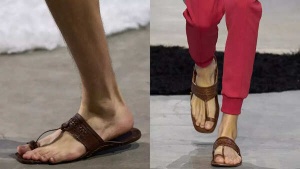Since its inception in 1877, Wimbledon has stood as the world's oldest and most prestigious tennis tournament. A hallmark of this iconic event is its stringent dress code, mandating that all competitors' attire be predominantly white, save for a mere 10mm trim of color.
The tradition of wearing all white at Wimbledon can be traced back to the 1870s, during the Victorian era. The primary reason for this sartorial choice was to mitigate the visibility of perspiration, which was considered unseemly at the time.
Over the years, the all-white rule evolved from a practical measure to a symbol of Wimbledon's rich tradition and history. While the dress code remains generally strict, it has undergone occasional revisions to accommodate the changing times.
Several prominent figures in tennis, including Billie Jean King, Judy Murray, and Heather Watson, have voiced concerns regarding the discomfort that white undershorts can cause for female players during menstruation.
In response to these concerns, the All England Club updated its policy in 2023, allowing players to wear dark-colored undershorts, provided they do not extend beyond the hemline of the shorts or skirt.
Controversies surrounding the Wimbledon dress code are not a recent phenomenon.
Tennis legend Roger Federer also sparked debate in 2013 when he sported white shoes with orange soles.
Wimbledon officials requested that he refrain from wearing the shoes, prompting Federer to deem the regulations "too strict."
More recently, in 2017, Venus Williams was instructed to change her attire during a rain delay due to the visibility of her fuchsia bra straps.
In 2023, Wimbledon relaxed its dress code restrictions, allowing women to wear darker undershorts beneath their skirts. This decision followed concerns raised by several players regarding the challenges of wearing white during their menstrual cycles.
In an official statement, the AELTC emphasized, "Prioritizing women’s health and supporting players based on their individual needs is very important to us, and we are in discussions with the WTA, with manufacturers, and with the medical teams about the ways in which we can do that."
Newer articles
Older articles
 Jannat Zubair Reveals "Biggest Regret" After "The Traitors" Elimination; Finale Looms
Jannat Zubair Reveals "Biggest Regret" After "The Traitors" Elimination; Finale Looms
 Beyond the Blood Test: 5 Subtle Signals of Prediabetes You Shouldn't Ignore
Beyond the Blood Test: 5 Subtle Signals of Prediabetes You Shouldn't Ignore
 Samsung Galaxy A35 5G and A55 5G: Official Pricing and Availability Announced
Samsung Galaxy A35 5G and A55 5G: Official Pricing and Availability Announced
 Najmul Hossain Resigns as Bangladesh Test Captain After Sri Lanka Defeat
Najmul Hossain Resigns as Bangladesh Test Captain After Sri Lanka Defeat
 Gambhir Defends India's Tailenders Despite Costly Batting Collapses in England Test Loss
Gambhir Defends India's Tailenders Despite Costly Batting Collapses in England Test Loss
 West Indies Coach Daren Sammy Fined, Receives Demerit Point for Umpire Criticism
West Indies Coach Daren Sammy Fined, Receives Demerit Point for Umpire Criticism
 FIFA Club World Cup 2025: Upsets, Messi Magic, and 2026 World Cup Concerns Emerge From Group Stage
FIFA Club World Cup 2025: Upsets, Messi Magic, and 2026 World Cup Concerns Emerge From Group Stage
 Wimbledon's All-White Dress Code: The History, Controversies, and Evolving Rules
Wimbledon's All-White Dress Code: The History, Controversies, and Evolving Rules
 Colon Cancer: Don't Ignore These 5 Early Warning Signs
Colon Cancer: Don't Ignore These 5 Early Warning Signs
 Prada Admits Kolhapuri Chappal Influence in New Sandal Design After Criticism
Prada Admits Kolhapuri Chappal Influence in New Sandal Design After Criticism